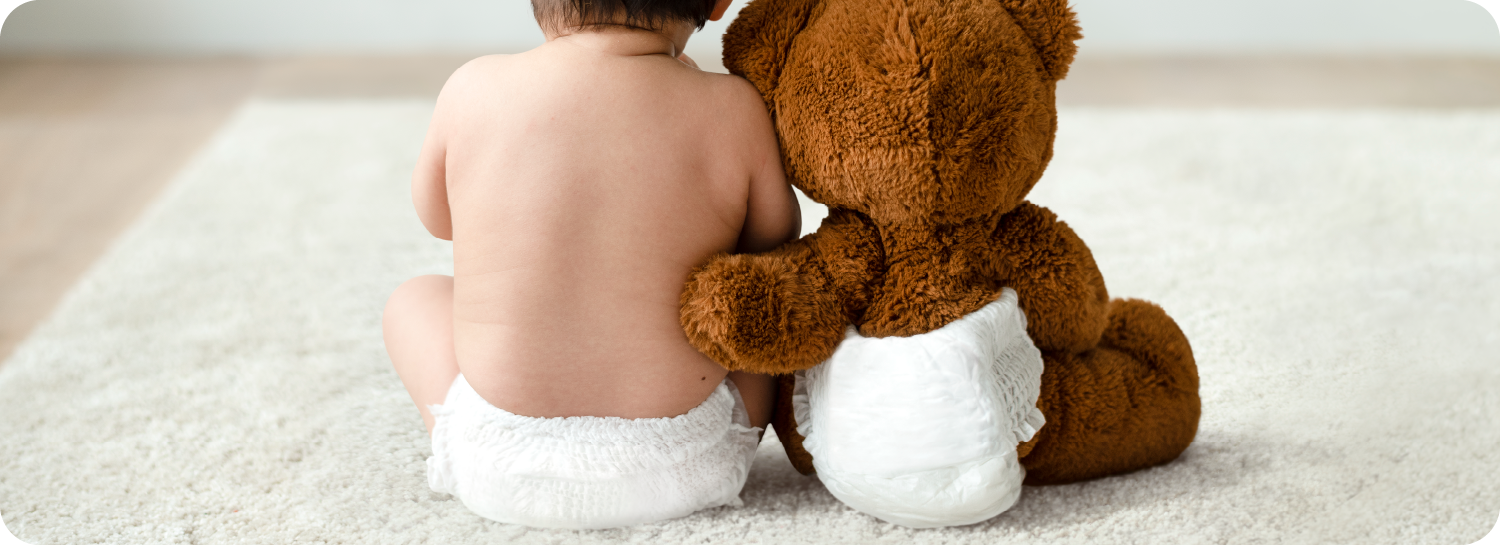
Diapering is a routine task for parents and caregivers of infants and toddlers. Ensuring proper diapering techniques and hygiene practices is essential for maintaining the health and comfort of the child and preventing skin irritation or infections. Here’s a guide to diapering safely and effectively:
Diapering Safety:
Hand Hygiene: Wash your hands thoroughly with soap and water before and after each diaper change to prevent the spread of germs and bacteria.
Diaper Changing Area: Designate a clean, flat surface for diaper changes, such as a changing table or diaper changing pad. Ensure the area is free of hazards and within reach of essential supplies like diapers, wipes, and diaper rash cream.
Supervision: Never leave a child unattended on a changing table or any elevated surface, as they can roll or fall off unexpectedly. Keep one hand on the child at all times during the diaper change for added safety.
Proper Disposal: Dispose of soiled diapers promptly in a designated diaper pail or trash bin with a secure lid to contain odors and prevent pets or curious children from accessing them.
Avoid Over-tightening: While securing the diaper tabs snugly is essential to prevent leaks, avoid over-tightening, as it can cause discomfort and restrict circulation.
Check for Proper Fit: Ensure the diaper is the correct size for your child and adjust the fit as needed to prevent gaps or sagging, which can lead to leaks and discomfort.
Watch for Signs of Irritation: Monitor your child’s skin for signs of diaper rash or irritation, such as redness, swelling, or chafing. Change diapers promptly and consider using diaper rash cream to soothe and protect the skin.
Be Prepared for Messes: Have extra diapers, wipes, and a change of clothes readily available in case of accidents or unexpected messes during diaper changes.
Effective Diapering Practices:
Gentle Cleansing: Use fragrance-free baby wipes or a clean, damp cloth to gently clean your child’s diaper area during each change. Avoid using harsh soaps or wipes with alcohol, as they can irritate the skin.
Pat Dry: After cleaning, pat the diaper area dry with a soft towel or allow it to air dry before applying a fresh diaper. Avoid rubbing or scrubbing, as this can further irritate sensitive skin.
Apply Diaper Cream as Needed: Use a diaper rash cream or ointment to create a protective barrier against moisture and irritation, especially if your child is prone to diaper rash. Apply a thin layer to clean, dry skin before putting on a new diaper.
Proper Disposal of Disposable Diapers: Roll up soiled disposable diapers and fasten them securely with the tabs before disposing of them in the trash. Do not flush diapers down the toilet, as they can cause plumbing issues.
Consider Cloth Diapers: If using cloth diapers, follow the manufacturer’s instructions for washing and care to maintain cleanliness and prevent bacterial growth. Use a diaper liner or insert to absorb moisture and minimize messes.
Change Diapers Frequently: Aim to change your child’s diaper every 2-3 hours or as soon as it becomes soiled to prevent diaper rash and discomfort.
Nighttime Diapering: Use overnight diapers or add extra absorbent inserts for nighttime diapering to provide extended protection and minimize leaks, allowing your child to sleep comfortably.
Diaper Bag Essentials: When out and about, pack a diaper bag with all the necessary supplies for diaper changes, including diapers, wipes, diaper cream, and a changing pad. Having everything you need on hand makes diapering on the go more convenient and efficient.
By following these safety guidelines and effective diapering practices, parents and caregivers can ensure a comfortable and hygienic diapering experience for their child while minimizing the risk of skin irritation or discomfort. Regular diaper changes and proper hygiene play a crucial role in keeping your child healthy and happy.
